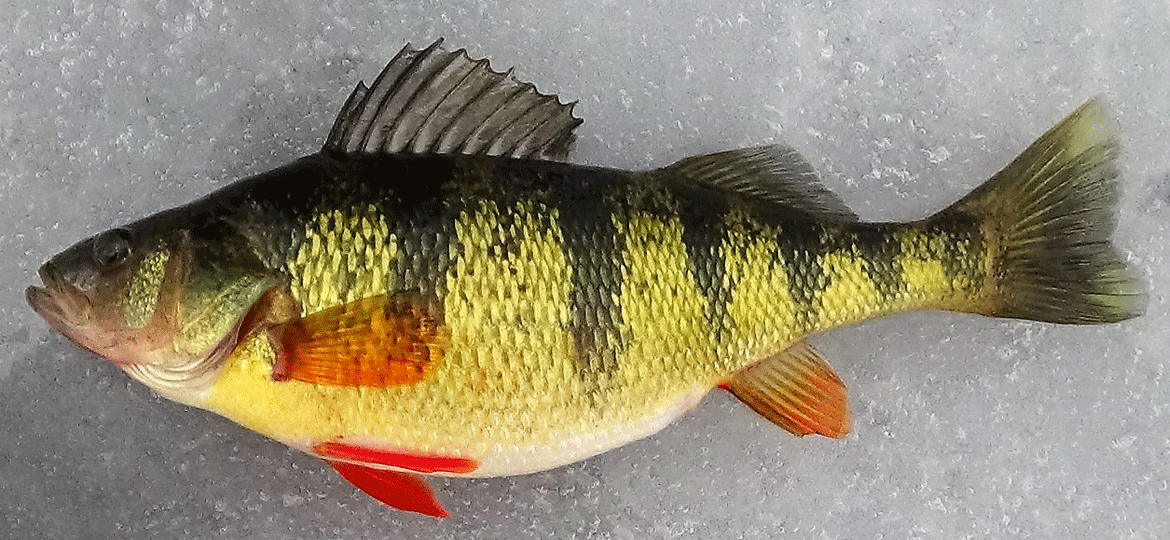
The yellow perch (Perca flavescens) is a schooling fish, popular amongst anglers year-round as it is one of the most common fishes in Vermont. This fish can be found from the Atlantic, Arctic, and St. Lawrence drainages from Nova Scotia, west through the Great Lake drainages to the Northwest Territories, Canada, and south through the Mississippi basin to Ohio, Illinois, and Nebraska. In addition, yellow perch have been introduced to waters outside of its native range.
Habitat
Inhabiting many of the lakes, ponds, and rivers in Vermont, yellow perch tend to school around mud and gravel bottoms, generally near vegetation. Larger fish can be found in more open water, whereas smaller fish congregate closer to shore. Yellow perch are also relatively tolerant of low pH.
Reproduction
Yellow perch usually live eight to ten years, but some over 20 years old have been observed in Vermont. Yellow perch eight to 12 inches in length are common, but sizes can vary between water bodies. Female perch mature around four years old whereas males mature at around three. In stunted or heavily fished populations, sexual maturity can occur earlier.
Yellow perch usually begin spawning in springtime around April and May when water temperatures reach 44 to 54°F. No nests are prepared for egg-laying.
Up to 25 male perch may spawn with a single female, which in the case larger females, can deposit over 100,000 eggs. Eggs are deposited in a stringy mass and remain unguarded until they hatch in eight to ten days. If water temperatures drop, the eggs can take up to three weeks to hatch.
Diet
Yellow perch are active bottom and mid-water feeders throughout the year. Adults consume aquatic insect larvae, larger invertebrates, and small fish. Young individuals feed on zooplankton, crustaceans, and midge larvae.
Management
There is a 50 perch daily limit on most waters in Vermont. There is no daily limit on Lake Champlain.
Status
This species is not listed as threatened or endangered and is not currently a species of greatest conservation need in Vermont.
Fun Facts
- Other common names: lake perch, American perch, ringed perch, perchaud
- Yellow perch is the MOST preferred species by Vermont ice anglers.
- In open water, it is the eighth most popular species, behind brook trout, large and smallmouth bass, rainbow trout, brown trout, lake trout and northern pike.
- An estimated 595,000 angler-days were spent by Vermonters targeting yellow perch in 2019.
- Some consider perch eggs (roe) to be a delicacy. Female perch caught in the winter usually have plump egg sacs (called skeins) that can be breaded and fried just like the fillets. Tasty or not? You decide!
- Yellow perch tend to separate into schools of fish that are all the same size and age. Males and females sometimes stay in separate schools, with similar-sized fish grouping up together. That’s why it’s common to catch “cookie-cutter” fish in one spot.
- Yellow perch have a circumpolar distribution, occurring in fresh waters across the northern hemisphere. The European yellow perch grows much larger and can reach six pounds!
- The Vermont State Record is 2-lbs 6-oz and was caught in Caspian Lake in February 2015. It measured 16-inches in length and had a 12.5-inch girth.
